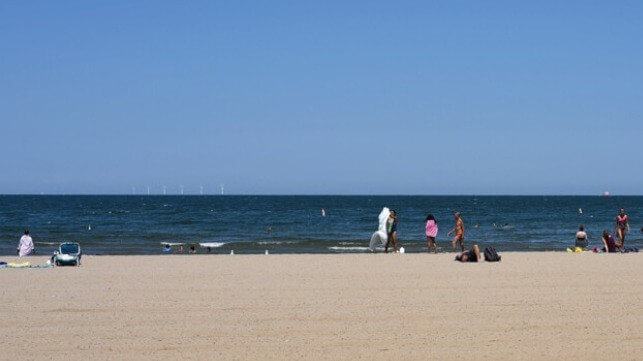Ohio Supreme Court Rejects Bird Claims Approving Freshwater Wind Farm

The Ohio Supreme Court ruled in favor of a project to build the first freshwater offshore wind farm in North America, which is seen as a demonstration of the potential to expand the industry. The court in a six-to-one decision handed down on August 10, ended a legal battle that has gone on for nearly two years blocking the construction of the project which is known as Icebreaker Wind.
The Lake Erie Energy Development Corporation (LEEDCo) was set up in 2009 as a non-profit public-private partnership leading efforts to build a sustainable offshore wind energy industry in the Great Lakes. Working with Fred. Olsen Renewables a plan was developed for a 20.7 MW demonstration wind farm that would consist of six 3.45 MW turbines located eight to ten miles north of Cleveland, Ohio. The lease area is just over four acres in the lake.
According to the company, Lake Erie is an ideal location for offshore wind, with ample available interconnect capacity, large load centers along the coast, growing energy demand due to existing plant retirements, a strong manufacturing base, and limited other sources of renewable energy. The design includes the use of foundations designed to reduce the environmental impact.
They had expected to complete construction this year on the demonstration project after winning an initial lease in 2014 from the State of Ohio and clearing planning stages and reviews. The Ohio Power Siting Board’s decision to approve the permit, which was expected in early 2020, was the last critical step before construction could begin.
The board issued a certificate to the Icebreaker project in May 2020, but imposed over 30 conditions on the project saying that additional study was required due to the uncertainty of the impact of the wind turbines primarily on birds and bats. Among the initial terms was a requirement to turn off the turbines from dusk to dawn for the majority of the year. The company, however, asked the board to reconsider the restrictions and by agreeing to incorporate available technologies to minimize the harm to wildlife won the removal of the nighttime operating restriction. The board required monitoring of the wildlife and installation of a radar unit before construction, but said that the location was far enough offshore so that it was unlikely to impact nesting birds or roosting bats.
Two residents living on the lake shore, however, appealed the board’s decision to the Ohio Supreme Court. According to the summary of the case provided by the court, the residents claimed the board could not issue a certificate because Icebreaker had not provided adequate evidence to determine the wind farm’s probable impact on birds and bats. The residents also argued that the project would violate the “public-trust doctrine,” which requires the state to maintain the use of Lake Erie for the benefit of the people of Ohio.
Announcing the court’s decision to approve the permit for the wind farm, Justice Jennifer Brunner wrote in the majority opinion that “the board collected the necessary research to allow Icebreaker to begin construction, while also requiring far more data before the company can operate the turbines.” In the court’s opinion, the board determined that the conditions were sufficient “to protect birds and bats and to ensure that the facility represented the minimum adverse environmental impact.”
The sole dissenting justice however argued that “the board held the project to a lesser degree of scrutiny because the proposed wind farm is a first-of-its-kind demonstration project.” Justice Sharon Kennedy said Ohio law does not make exceptions for demonstration projects and in her opinion, the board had failed to make the required findings regarding the environmental impacts of the proposed facility, including its impact on aquatic and avian wildlife, before issuing the certificate.”
LEEDCo welcomed the court decision while saying it would need to “regroup” after the long delay. The company said it would resume marketing to obtain contracts for two-thirds of the power that will be generated, while also resuming planning for the construction of the demonstration project.
